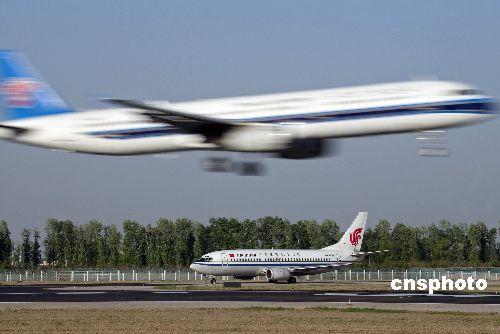
(Ecns.cn) -- As growing air traffic pressure makes flight delays a common occurrence, the Beijing Capital International Airport (BCIA) can't squeeze even one more flight into its tight daily schedule, reports the Economy & Nation Weekly magazine.
As a result, major airlines are keeping a close eye on the progress of plans to construct a second mega airport in the capital, the magazine adds.
Although the plans are still in the approval stage, some airlines have already begun competing for a future presence at the Beijing New International Airport (BNIA), including China Southern Airlines and China Eastern Airlines.
Their motives are clear: the BNIA, which is likely to replace Hartsfield-Jackson Atlanta International Airport as the world's busiest, will bring about major changes to China's civil aviation market, and no one wants to miss out.
Congestion relief
On June 6, 2012, the mysterious military-controlled Beijing Nanyuan Airport, the country's oldest, unveiled a new terminal allowing it to serve significantly more passengers, according to Xinhua News Agency.
The 10,000-square-meter terminal located in the southern Fengtai District went into operation on June 8 with a renovated parking lot, runway and tarmac, said a statement from China United Airlines, which operates the 102-year-old facility.
The expansion of Beijing Nanyuan is a measure to temporarily relieve the city's air traffic pressure. With the new terminal, the airport will be able to serve 6 million passengers a year, a major increase from the 2.8 million in 2011, according to the statement.
Beijing Capital International was designed to handle 80 million passengers a year. In 2011, the airport saw 77.4 million, a 4.7 percent increase from 73.9 million passengers the previous year.
It has long been ranked as the second busiest airport in the world, and last year's statistics brought it even closer to toppling Atlanta's lead.
But with passenger volume growing so rapidly, the BCIA has nearly reached its full capacity, and yet there are still many more flights waiting to connect with Beijing.
Even with the expansion, Beijing Nanyuan Airport will not be able to handle the increasing passenger volume in five to ten years, said Li Kun, a researcher at the National Development and Reform Commission, the country's top economic planner.
To completely solve the problem of constant air traffic jams, a second international airport is urgently needed, said Li.
Solid plans
The BNIA project received approval in principle by the State Council several months ago, so hopefully it will get formal approval and begin construction by the end of this year, said a former official from the Civil Aviation Administration of China (CAAC).
The Beijing Municipal People's Government, the CAAC and the military have reached an agreement on the relocation of Beijing Nanyuan, so there are no obstacles for the BNIA project, the official added.
The BNIA is to be launched in the city's southern Daxing District, north of the Yongding River and next to Hebei Province, according to a staff member at the Air Traffic Management Bureau of the CAAC.
A preliminary feasibility report shows that the airport does not have to be overly large at first, since it will function together with Beijing Capital International and can be expanded should the need arise.
The new airport, which will cost an initial 80 billion yuan, is expected to be completed by October 2017. Once it goes into use, Beijing Nanyuan Airport, which is used for both military and civilian purposes, will be closed, said the staff member.
Airlines get ready
Air China has a dominant market share of about 40 percent at the existing airport, making it difficult for other airlines to expand there. Not surprisingly, with the launch of the BNIA in sight, firms such as China Southern Airlines and China Eastern Airlines are excited about the prospects.
China Eastern plans to move all of its capacity to the new airport. This month, the airline started enhancing its position in Beijing through an expansion project at Beijing Nanyuan Airport.
It is also moving forward with a plan to integrate wholly-owned subsidiary China United Airlines with its Shijiazhuang-based Hebei Branch to increase flights to Beijing from its neighboring province.
Meanwhile, Air China is making efforts to stay at the BCIA, since dividing operations between two locations could give rise to problems.
Competing for market share is a good thing, and the launch of the new international airport will give the airlines a more equal platform to expand their businesses, says an industry watcher.

Copyright ©1999-2011 Chinanews.com. All rights reserved.
Reproduction in whole or in part without permission is prohibited.